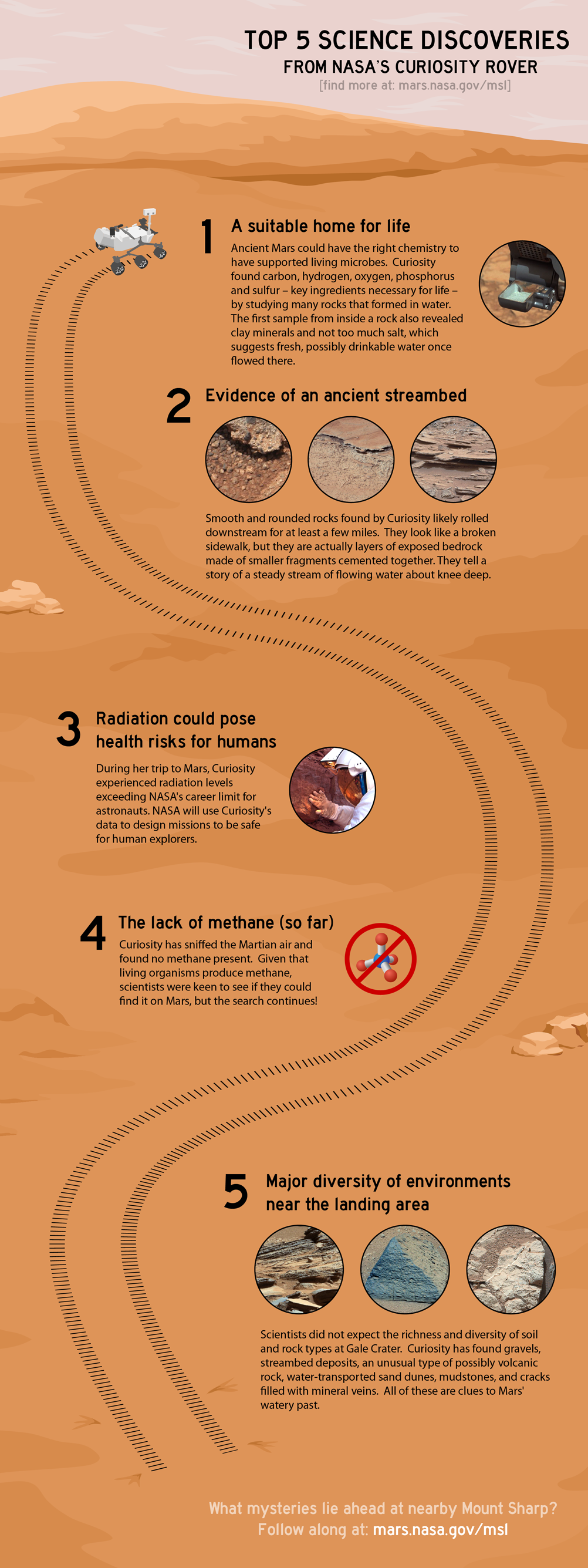On Mars Science Laboratory (MSL) Curiosity's 376th sol on Mars (August 27 2013) the rover completed its first autonomous drive on Mars, when its computers chose a route and drove the rover for 10 meters (33 feet) through previously uncharted terrain before stopping. This feature analyzes photos taken by MSL to determine a safe path ahead, enabling the rover to safely and efficiently cover ground on its own, without guidance from human controllers. This technology can identify safe routes beyond what human controllers are able to assess; thus MSL can move further every drive.
As Mark Maimore, MSL driver and mobility engineer, explained "Curiosity takes several sets of stereo pairs of images, and the rover's computer processes that information to map any geometric hazard or rough terrain. The rover considers all the paths it could take to get to the designated endpoint for the drive and chooses the best one."
Below is a mosaic of many images taken immediately following that drive. Click the image to see it in high resolution.
 |
| Mosaic of images taken by MSL on its 376th Sol on Mars. East is left and North is right (Southwest is center) Source: NASA/JPL (Click Image for High Resolution Version) |
The large mound in the left of the image is not Mount Sharp, but rather it is called Discovery Ridge and contains rocks no larger than .3 meters (1 foot) in diameter. The rise to the right of Discovery Ridge is wind-deposited material that has accumulated on the surface. This accumulation of material is approximately 4 meters (13 feet) long and lies approximately 10 meters (33 feet) from Curiosity.



